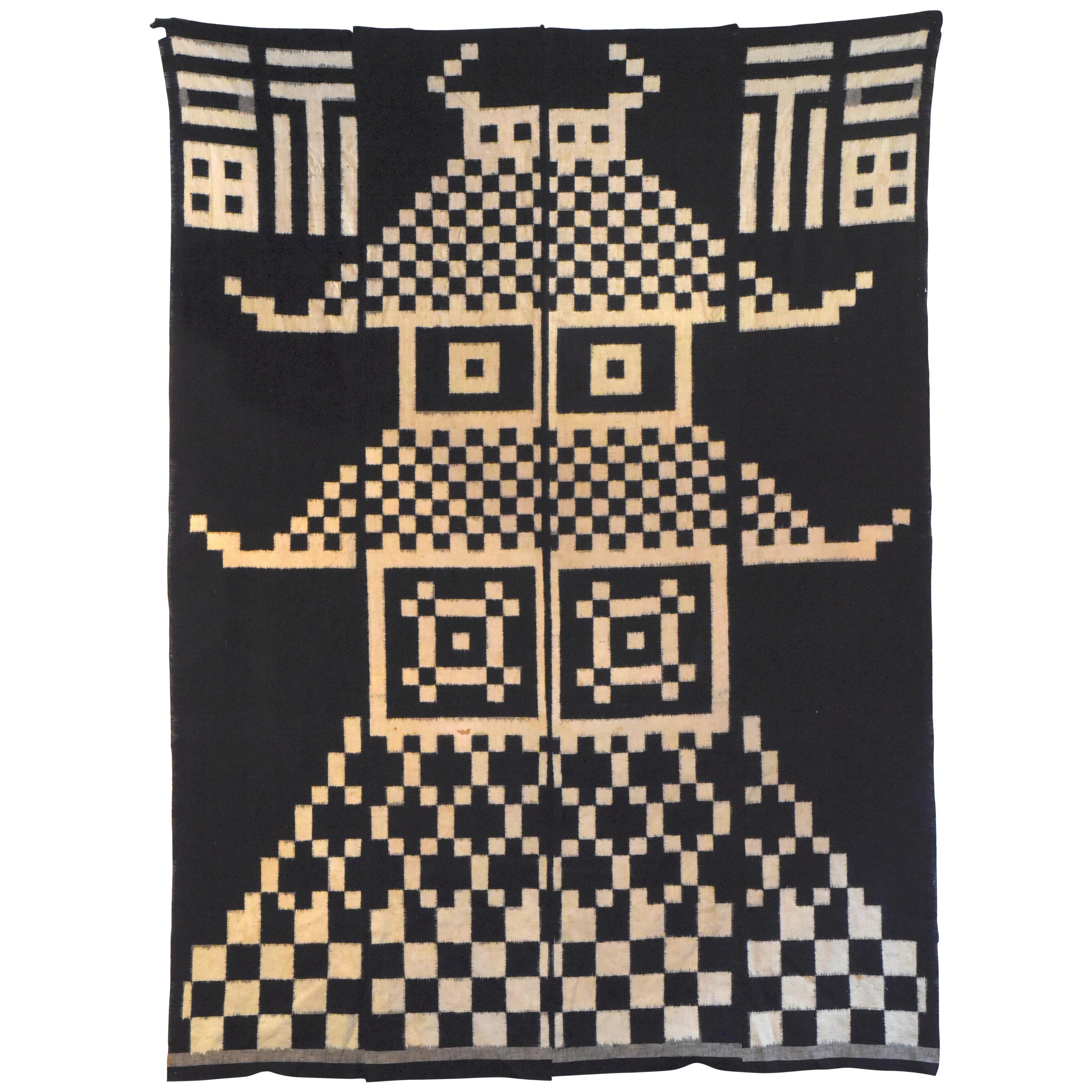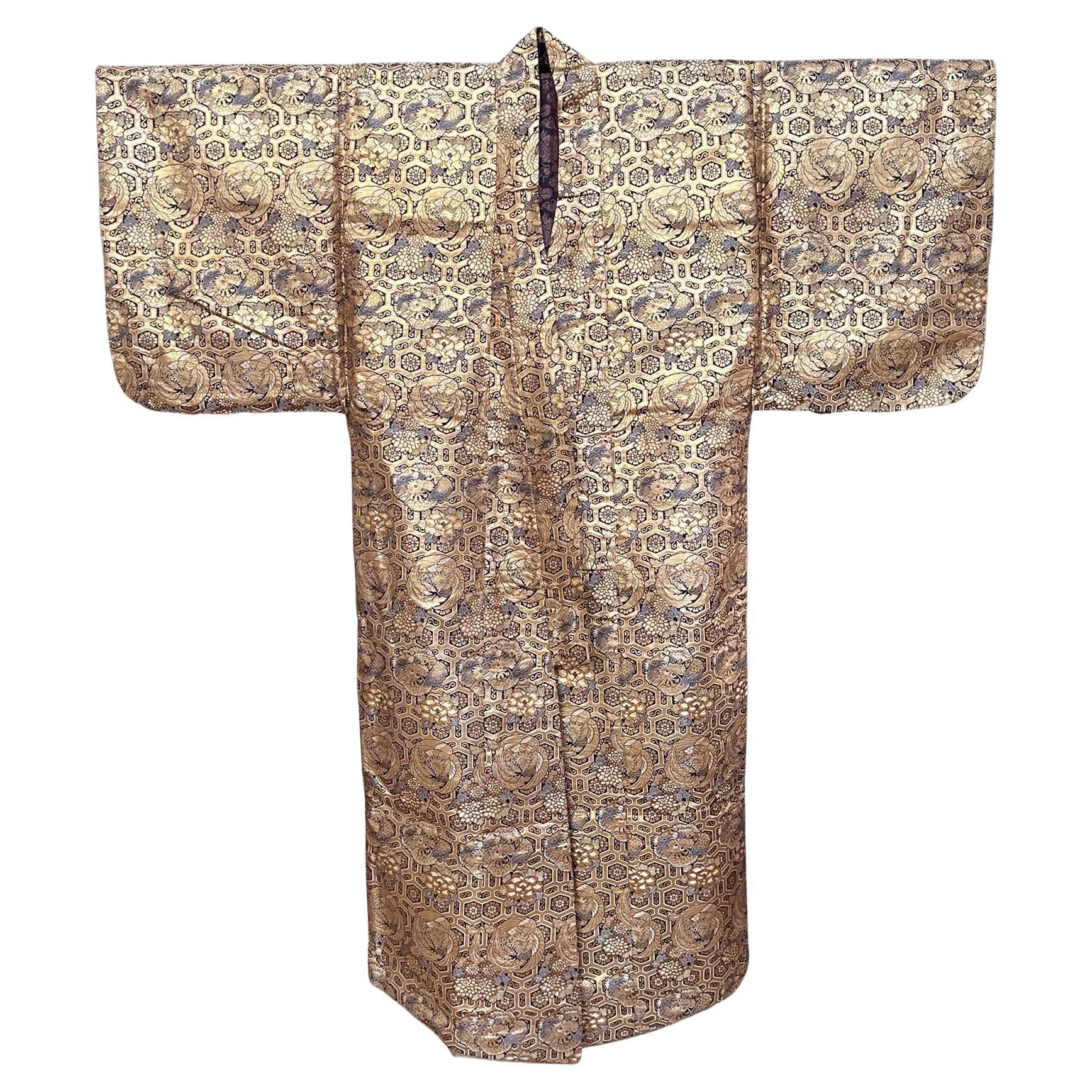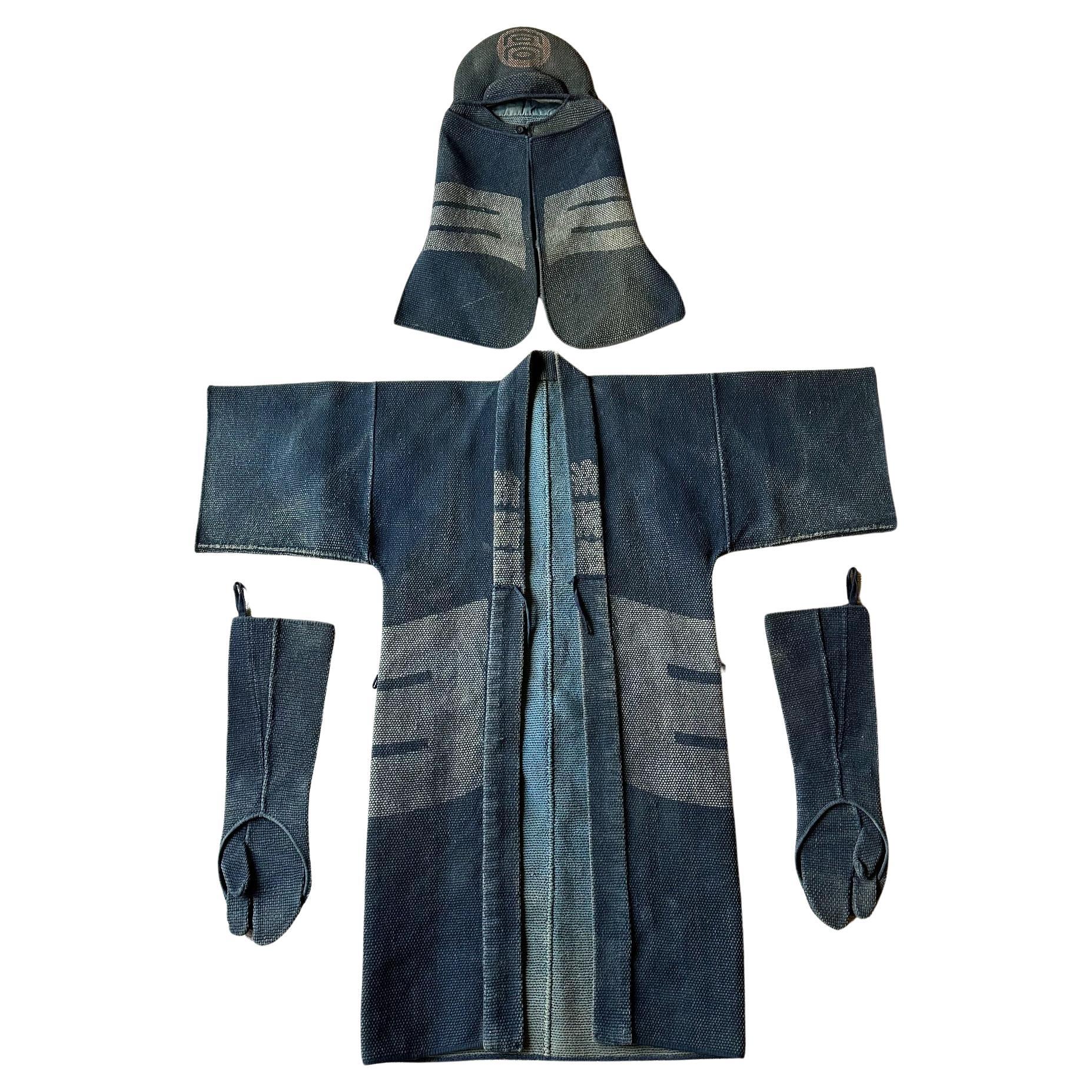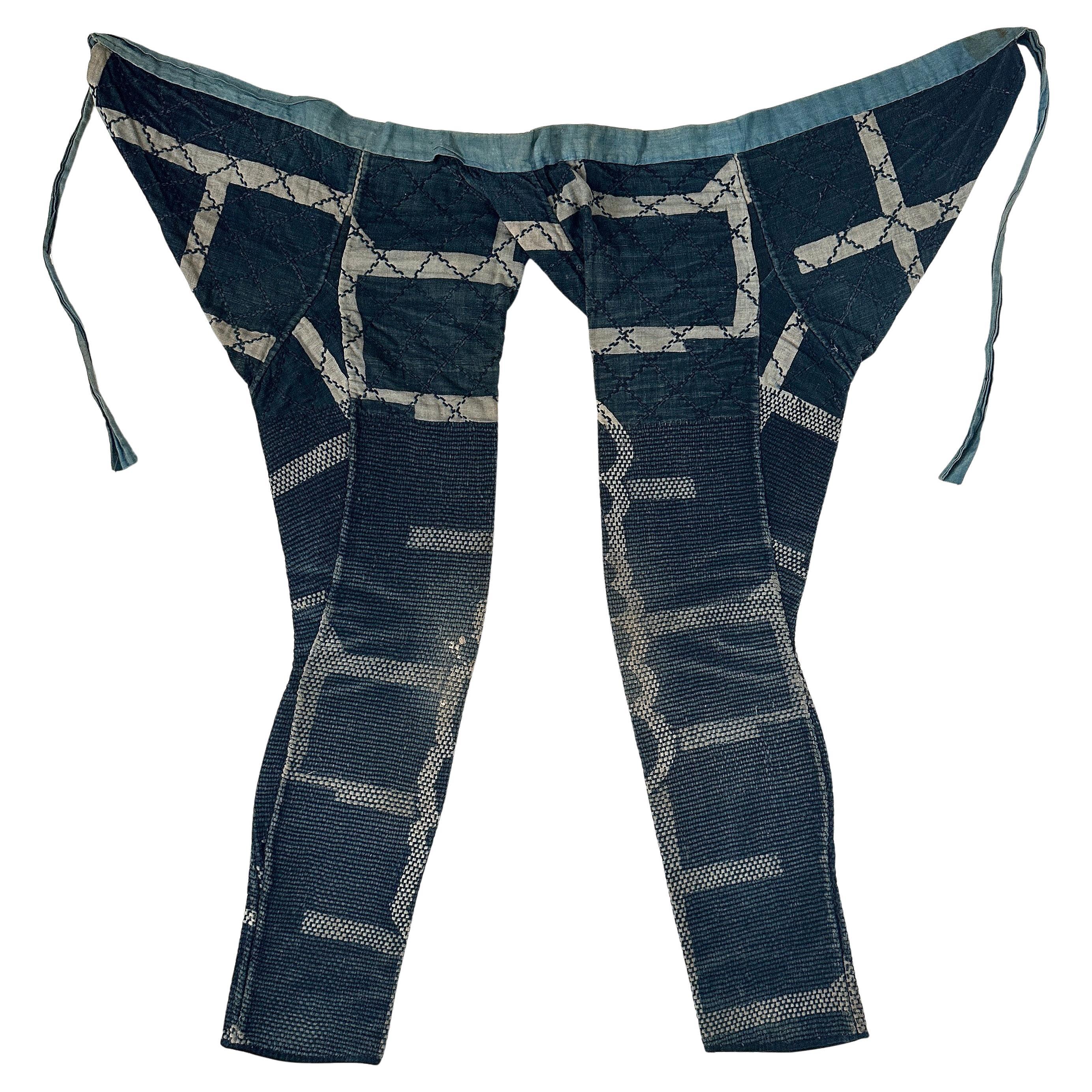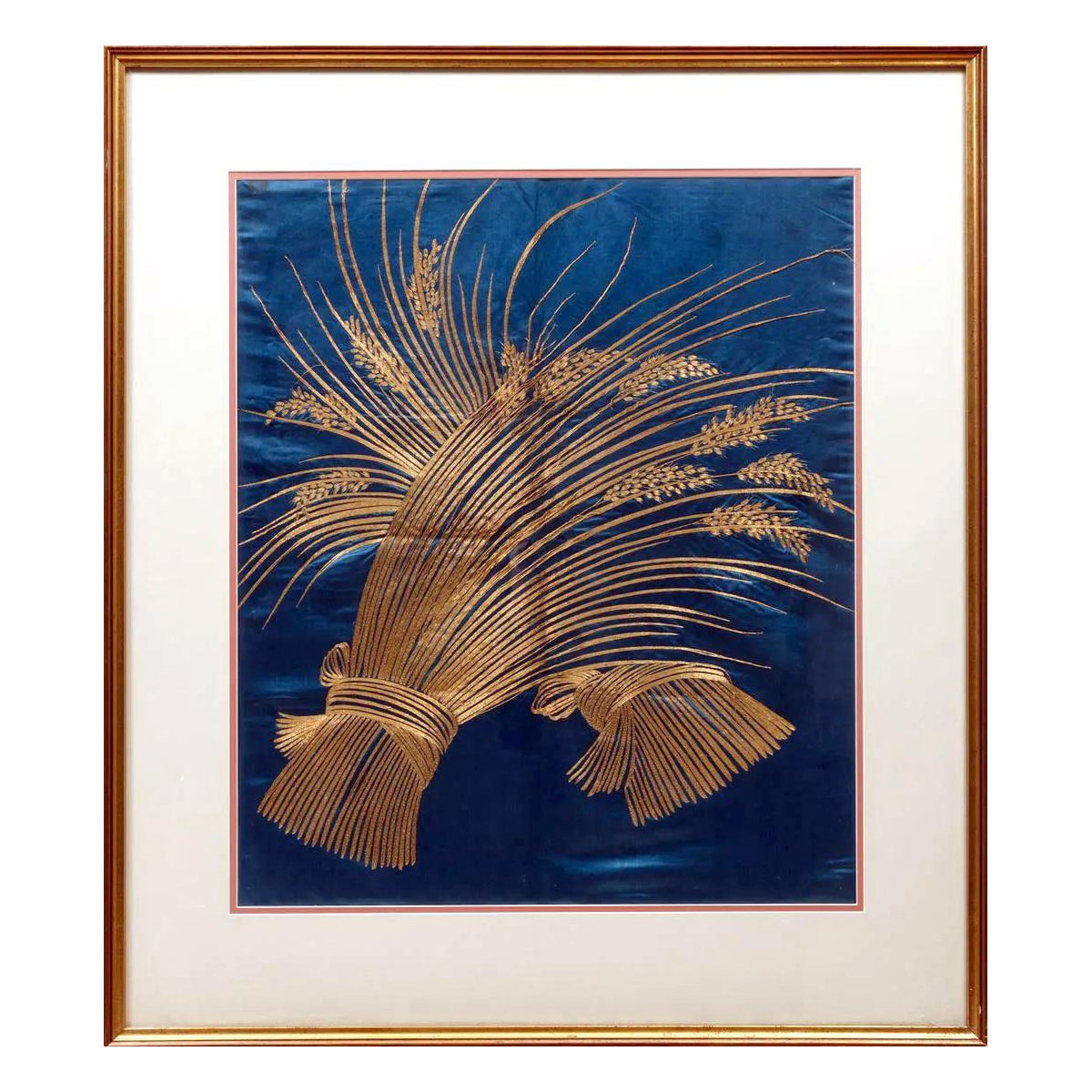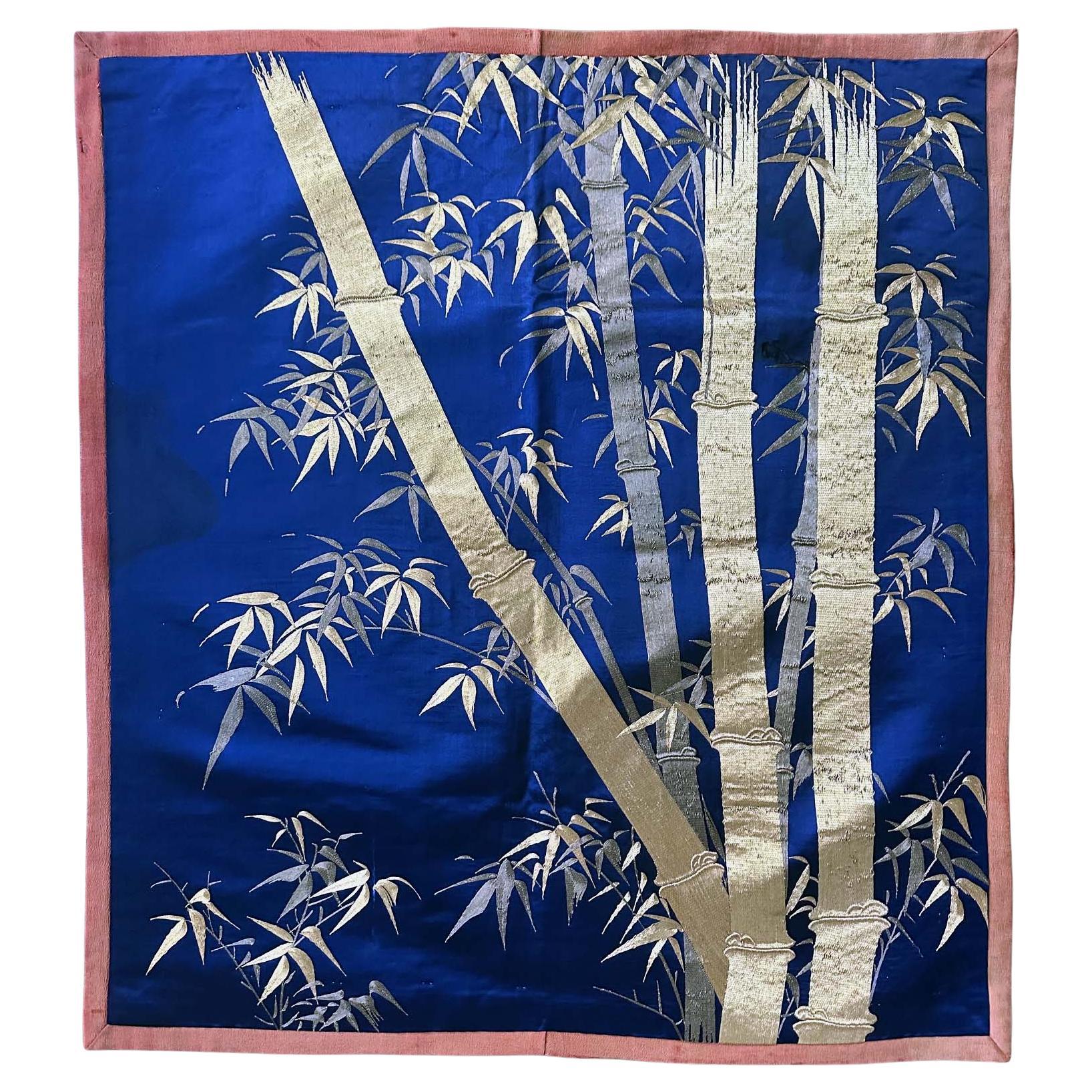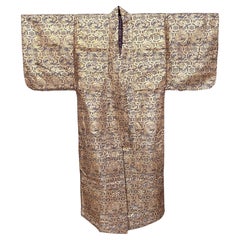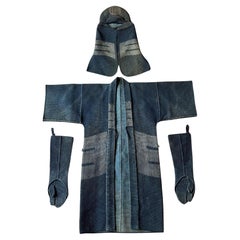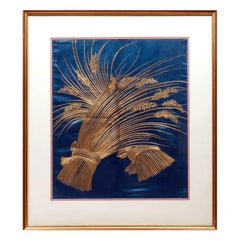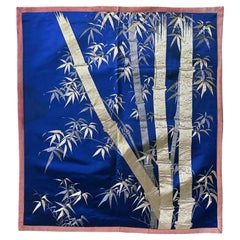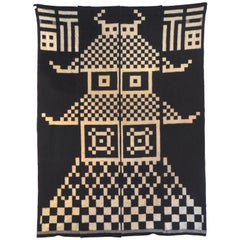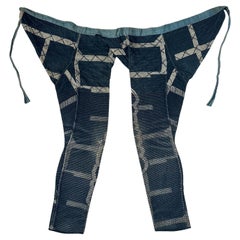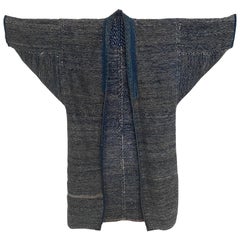Items Similar to Japanese Two-Piece Indigo Asa Kyogen Festival Costume Meiji Period
Want more images or videos?
Request additional images or videos from the seller
1 of 15
Japanese Two-Piece Indigo Asa Kyogen Festival Costume Meiji Period
About the Item
A two-piece Japanese festival costume based on Kyogen theater performance circa late 19th century (Meiji Period). The matching assemble consists of an oversize jacket (Suo) and a pair of trousers (hakama). Made from a fine and gauze-like indigo dyed natural fiber (Asa), likely linen, the costume is plain except the lozenge-shaped Hanabishi Mons placed on the front and back of the jacket as well as on the side of the pants. The motif was created used stencil resist dye (katazome). The loose hakama was traditionally tailored with a waist band reinforced with paper insert and long ties.
For a set of kyogen festival costume in near identical form and similar decoration but made from hemp instead of linen, see item 2019.20.69.1 in the collection of MIA (Minneapolis Institute of Art).
- Dimensions:Height: 52 in (132.08 cm)Width: 83 in (210.82 cm)Depth: 1 in (2.54 cm)
- Style:Meiji (Of the Period)
- Materials and Techniques:
- Place of Origin:
- Period:
- Date of Manufacture:late 19th to early 20th century
- Condition:Repaired: The interior back of the neck is reenforced on one side with a silk patch as shown, not visible from exterior. Wear consistent with age and use. Minor losses. Minor fading. Overall modest wear with fading and discoloration, frays and small loss on the edge of waist band of the pants. Many small holes (15 or so) scattered across the garment and the examples are visible on the detail picture.
- Seller Location:Atlanta, GA
- Reference Number:1stDibs: LU945034162312
About the Seller
4.9
Platinum Seller
Premium sellers with a 4.7+ rating and 24-hour response times
Established in 2006
1stDibs seller since 2010
542 sales on 1stDibs
Typical response time: <1 hour
- ShippingRetrieving quote...Shipping from: Atlanta, GA
- Return Policy
Authenticity Guarantee
In the unlikely event there’s an issue with an item’s authenticity, contact us within 1 year for a full refund. DetailsMoney-Back Guarantee
If your item is not as described, is damaged in transit, or does not arrive, contact us within 7 days for a full refund. Details24-Hour Cancellation
You have a 24-hour grace period in which to reconsider your purchase, with no questions asked.Vetted Professional Sellers
Our world-class sellers must adhere to strict standards for service and quality, maintaining the integrity of our listings.Price-Match Guarantee
If you find that a seller listed the same item for a lower price elsewhere, we’ll match it.Trusted Global Delivery
Our best-in-class carrier network provides specialized shipping options worldwide, including custom delivery.More From This Seller
View AllJapanese Brocade Noh Costume Kimono Robe Meiji Period
Located in Atlanta, GA
A Noh costume made from magnificent silk twill brocade woven with metallic gold threads circa 1930s. The robe is identified as "Atsuita", made for male actors in the Noh play. The luxuriant fabric has a deep blue background with golden interlocking hexagon pattern that resembles tortoise shells, the symbol of longevity. The motifs showcase three auspicious symbols in repetitive patterns: roundels of coiled dragon, phoenix and peony. The kimono robe...
Category
20th Century Japanese Meiji Textiles
Materials
Brocade, Silk
Rare Japanese Fireman's Four-Piece Assemble Meiji to Showa Period
Located in Atlanta, GA
A rare four-piece Japanese Fireman's assemble (Shobosho uniform) woven with heavy cotton and decorated with stencil resist dye circa 1890-20s Late Meiji to Showa Period. The assemble...
Category
Vintage 1920s Japanese Meiji Textiles
Materials
Cotton
Framed Japanese Embroidery Silk Panel Meiji Period
Located in Atlanta, GA
A Japanese silk embroidery Fukusa panel presented in mat and glazed gilt wood frame circa 1890-1910s (end of Meiji Period). The blue silk pane...
Category
Antique 1890s Japanese Meiji Textiles
Materials
Silk
Japanese Embroidery Silk Bamboo Fukusa Meiji Period
Located in Atlanta, GA
A Japanese silk embroidery Fukusa panel circa 1890-1910s toward the end of Meiji Period. On the deep blue satin background, the artist showcases a clump of bamboos in a realistic sty...
Category
Early 20th Century Japanese Meiji Textiles
Materials
Silk
Framed Japanese Embroidery Textile Panel Meiji Period
Located in Atlanta, GA
A Japanese textile panel with embroidered picture work circa late Meiji period (1900s) presented in a gilt wood frame with silk mat. The work de...
Category
Antique Early 1900s Japanese Meiji Textiles
Materials
Silk, Wood
Framed Japanese Embroidery Textile Panel Meiji Period
Located in Atlanta, GA
A Japanese textile panel with embroidery needlework circa late Meiji period (1900s) presented in a gilt wood frame with silk mat. The work depic...
Category
Antique Early 1900s Japanese Meiji Textiles
Materials
Silk, Wood
You May Also Like
Meiji Period Japanese Indigo Double Ikat Futon Cover
Located in Point Richmond, CA
Meiji period Japanese Indigo double ikat futon cover
Japanese futon cover, a double ikat pattern in four panels depicting Kumamoto Castle with im...
Category
Antique 1890s Japanese Meiji Textiles
Materials
Cotton
Antique Japanese Farmer's Pants, Indigo, Cotton, Meiji
Located in Point Richmond, CA
Japanese farmer’s indigo cotton pants. Woven and dyed cotton, worn by farmers working in the field. Narrow legs and ties around the waist. As shown, the pants have been well used ...
Category
Early 20th Century Japanese Meiji Textiles
Materials
Cotton
Saki-Ori Farmers Coat, Northern Japan, Meiji Period
Located in Point Richmond, CA
Saki-ori farmers coat, Northern Japan, Meiji period
A very heavy and substantial saki-ori coat, made of cotton with an indigo kasuri lapel. Several patches of hand sewn stitching ...
Category
20th Century Japanese Meiji Textiles
Materials
Cotton
Japanese Horse Trapping, "Uma-No-Haragake", Tsutsugaki, Cotton, Meiji Period
Located in Point Richmond, CA
Japanese horse trapping, "Uma-No-Haragake", Tsutsugaki, cotton, Meiji period
This type of haragake is called yuiage ("tied up"). The central portion covered the belly of the horse an...
Category
20th Century Japanese Meiji Textiles
Materials
Cotton
Late Meiji Period Sleeping Kimono / Yogi, Japan
Located in Point Richmond, CA
Late Meiji Period sleeping Kimono / Yogi, Japan
Yogi are a type of oversized sleeping kimono traditionally used in Japan. This kimono would have b...
Category
Early 20th Century Japanese Tribal Textiles
Materials
Cotton
Antique Japanese handmade Black Silk Kimono Meiji Period
Located in Norton, MA
BEAUTIFUL JAPANESE SILK KMIONO, MEIJI. In colorful floral, foliate, and landscape motif, length from collar to bottom of hem 61 inches, width from shoulder to shoulder 50 inches. Sta...
Category
Antique 19th Century Japanese Textiles
Materials
Silk
Recently Viewed
View AllMore Ways To Browse
Textile Front
Japanese Linen
Pair Costumes
Used Furniture Minneapolis
Japanese Indigo Textile
Antique Hemp
Antique Furniture Minneapolis
Antique Japanese Indigo
Costume Jacket Early
Chinese Embroidered Panel
Chinese Giltwood Panel
Raj Gold
Framed Asian Tapestry
Vintage Silk Embroidered Fabric
Antique Embroidered Persian Textiles
Safavid Textile
Antique Silk Crane
Chinese Silk Embroidered Panel
